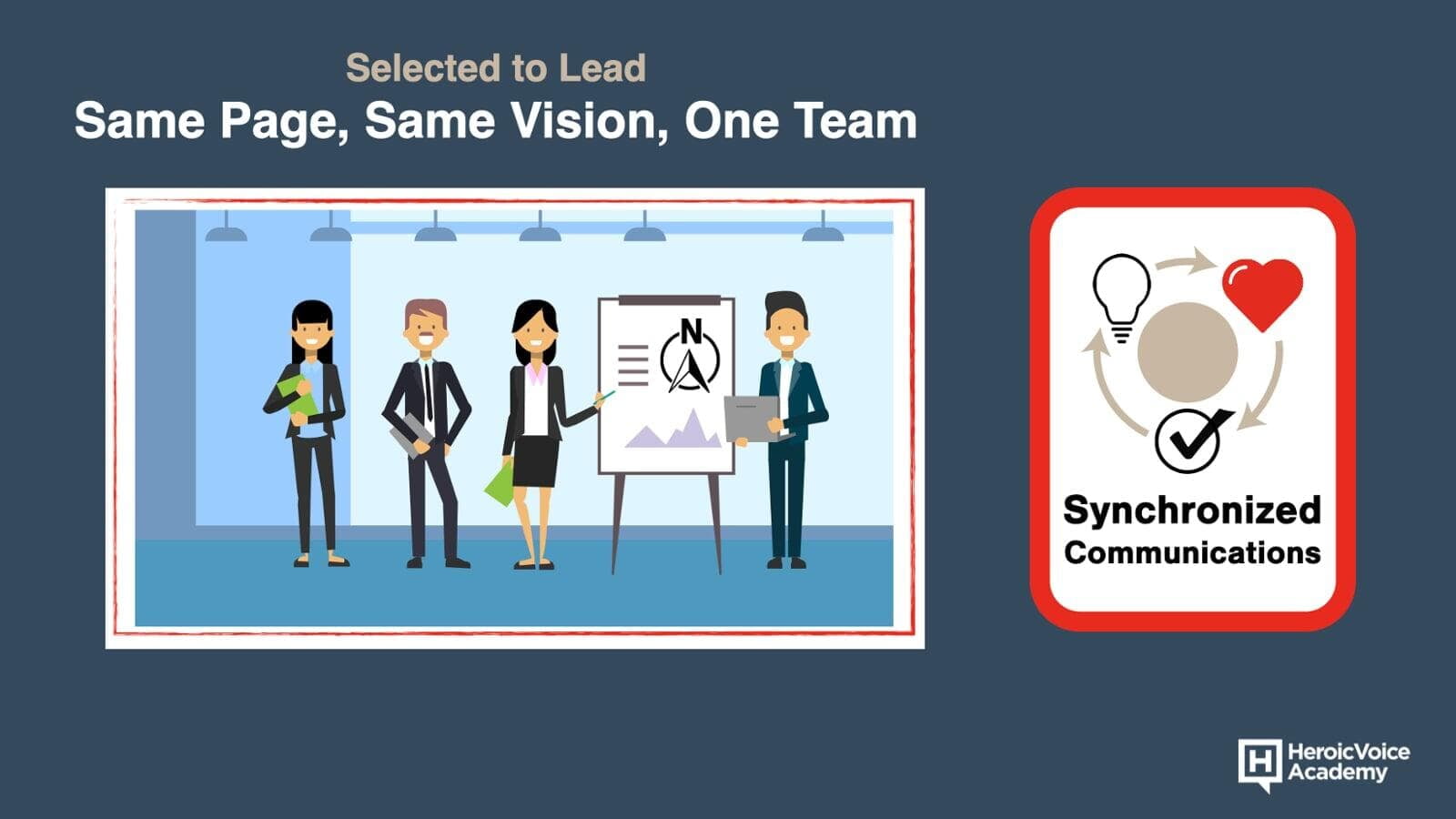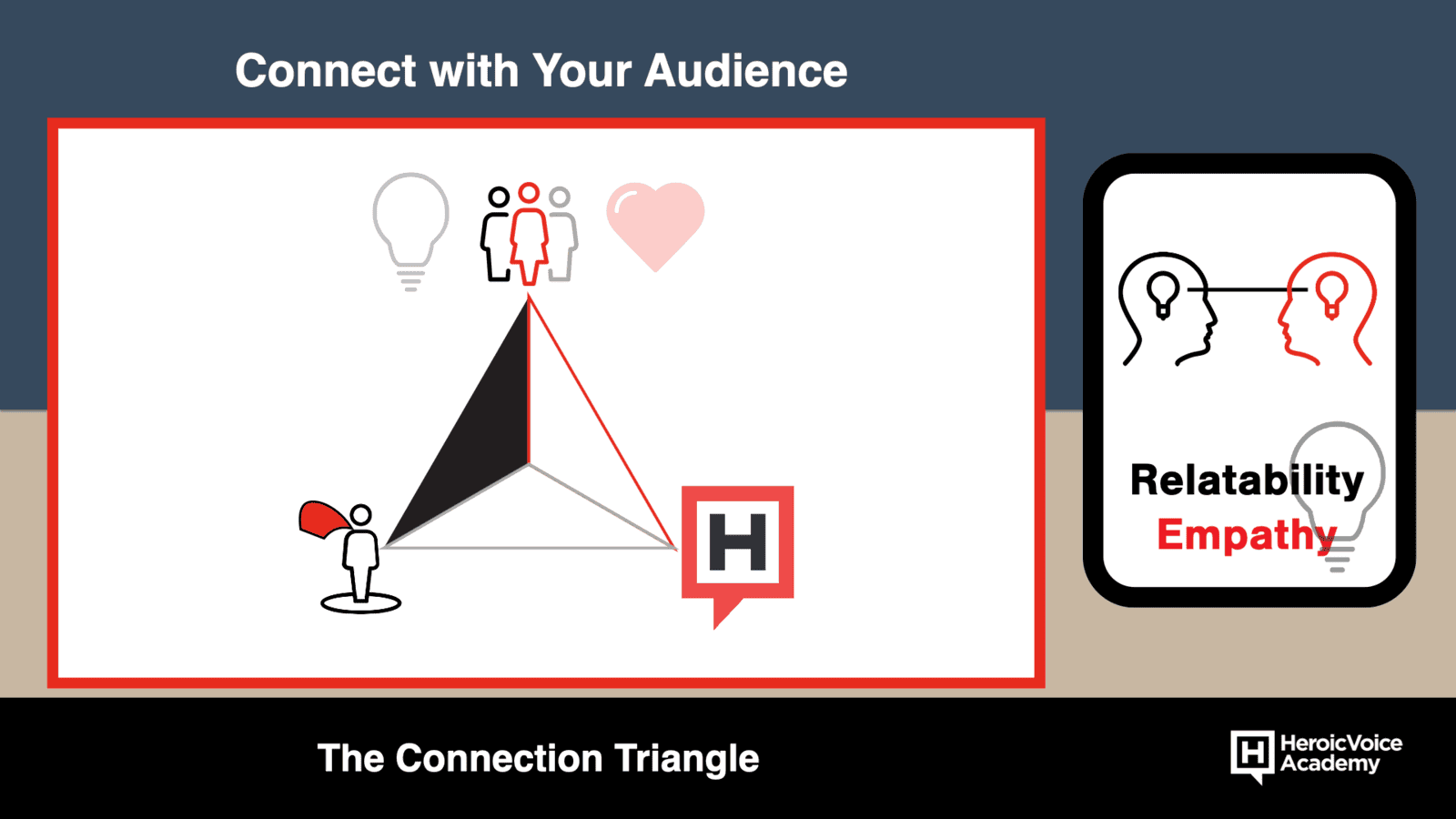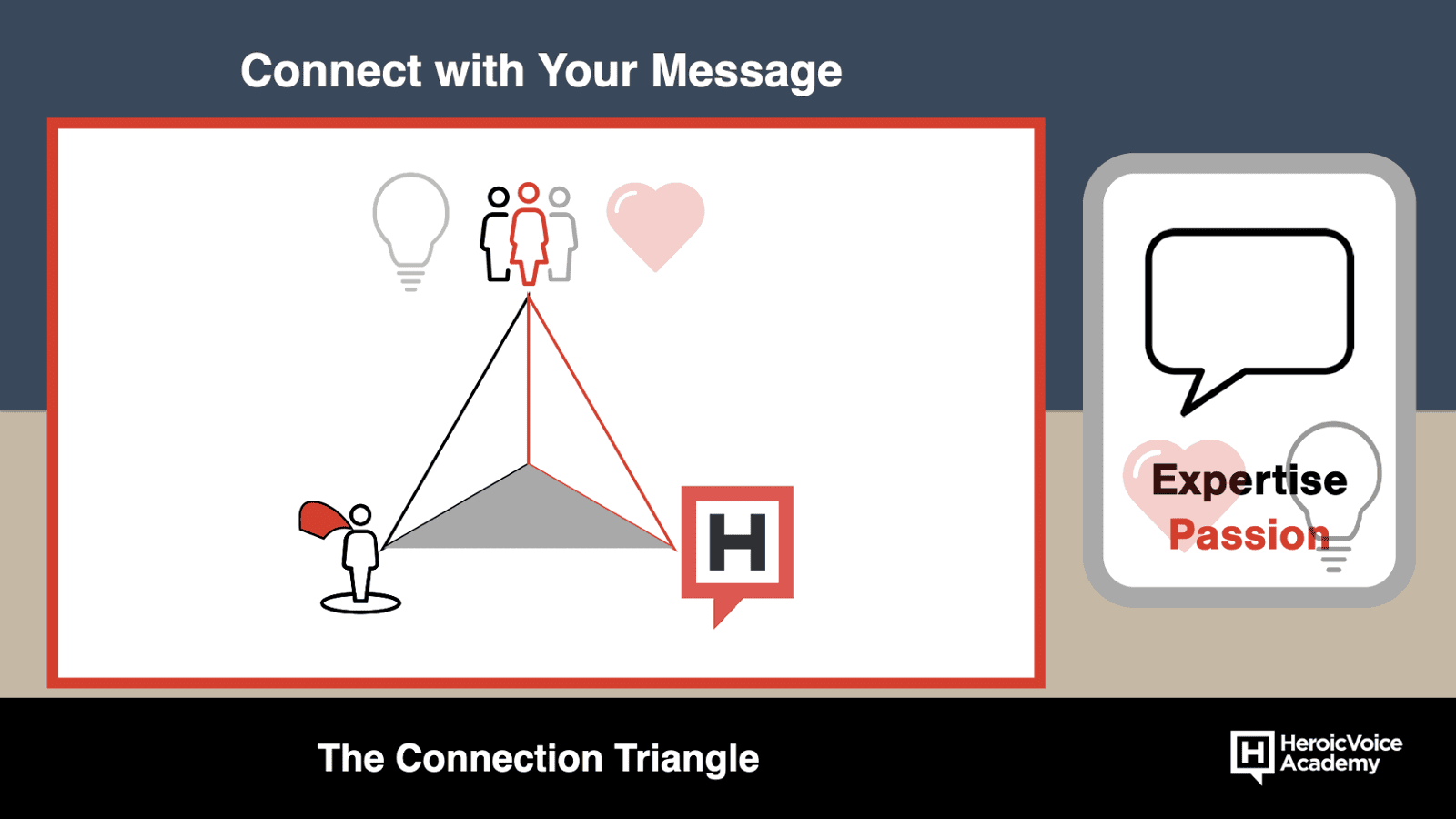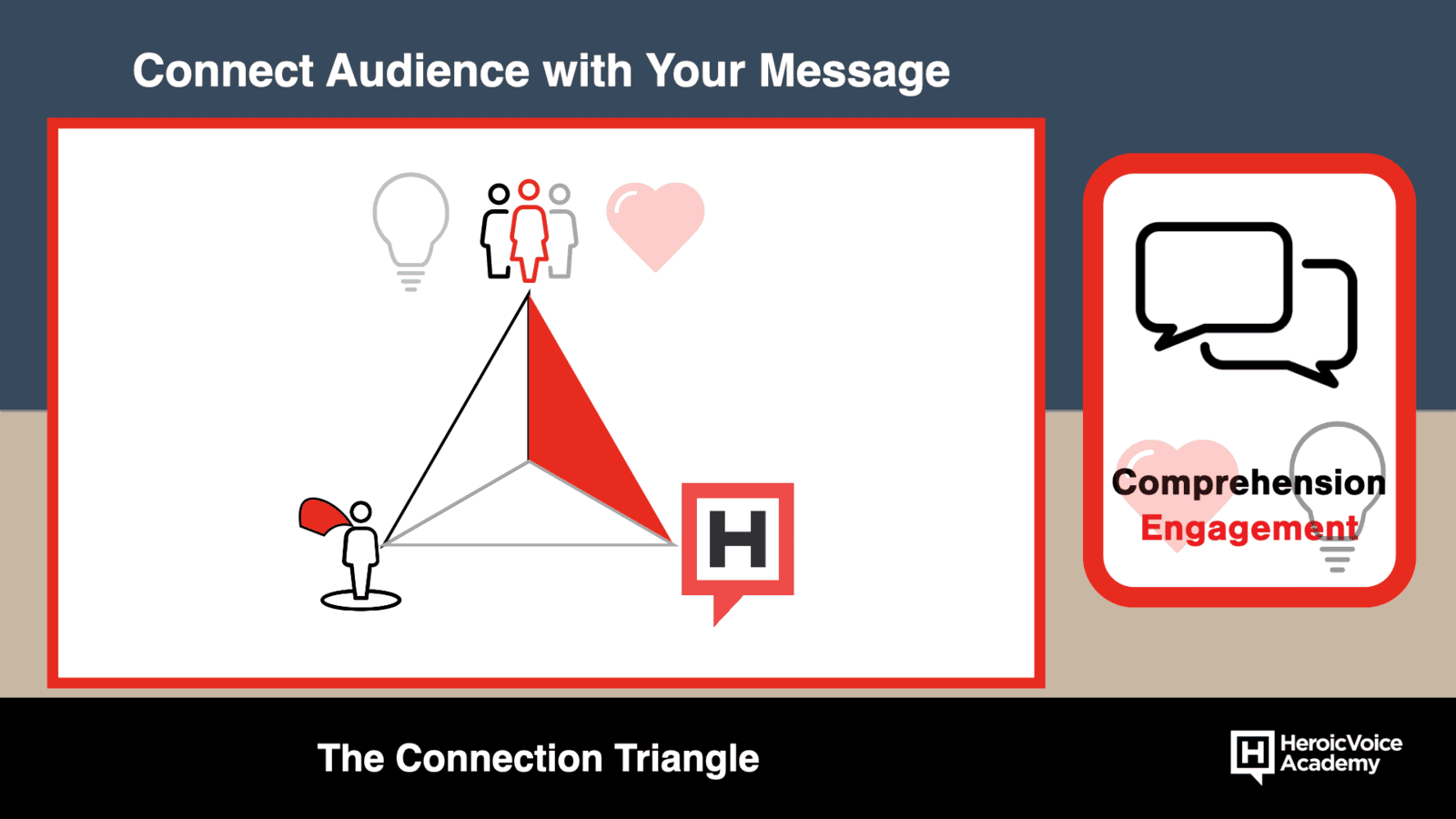
Overview
As a leader, you are invited to speak because of your level of expertise. This is an opportunity to deliver value to an audience by sharing your knowledge, skills and experiences. Whether you are delivering a message to your team or a keynote at an industry conference, you want to honor the time that your audience has invested in you.
A common strategy is to take the stage and share as much information as possible. After all, information is power. However, the goal of maximizing content often backfires. Instead of walking away empowered with the content you've shared, your audiences walks away feeling frustrated, confused, and overwhelmed.
Instead of maximizing content, focus on maximizing connection. In this article, we highlight 3 sets of communication skills from our Connection Triangle. These skills prepare you to connect with your audiences, connect with your message, and connect your audiences with your message.

Connect with Your Audience
The first part of the Connection Triangle includes two specific conversation skills. Relatability connects you to the minds in your audience, while empathy connects you to the hearts in your audience.
Using the skill of empathy allows you to communicate trust and create an emotional connection with your audience. Share times from the past when you've experienced the same emotions, and the audience will have confidence that you know what it feels like to be in their shoes.

Connect with Your Message
Think back to the most enjoyable presentations you've attended. What made these presentations stand out? In addition to the quality of the content, you likely experieced the speaker's energy, enthusiasm and passion. Contrast these experiences with times when the speaker rushed to deliver their message, spoke in a monotone voice, and wasn't excited to be there. What can you do to avoid creating that experience? Practice. A lot.
"The purpose of practice is not to achieve perfection. The purpose of practice is to create a habit of practice."
In the beginning of your practice sessions, allow it to be messy. Make lots of mistakes. Experiment with content. Have fun. With every practice session, you will shift the focus from remembering the content to delivering the content. Once you've mastered the content, you can access a variety of tools to demonstrate passion. Smile and use humor. Use the full range of your voice, vary your pitch, volume and pace.

Connect Your Audience with Your Message
The third part of the Connection Triangle includes two specific interaction skills. Comprehension is how much your audience knows about your message, while engagement is how much your audience cares about your message.
Comprehension = How Well Your Audience Knows Your Message
Remember that maximum content is not the objective. We certainly don't want our audience to ever have the experience of "drinking out of a firehose". Define success by the amount of audience comprehension you create. Design content that can be easily learned, remembered and applied. When your audience achieves comprehension, they are able to share your content and amplify the reach of your message.
In our presentation gym, we regularly share accelerated teaching tools that help your audience quickly learn content that you share. For example, we teach the "3 second rule": Design slides with memorable images rather than a lot of words. Audiences can easily absorb these types of slides in 3 seconds or less, and then give you their full attention.
When your audience engages with your content, it transforms theoretical knowledge into practical tools. This quote from Confucius beautifully summarizes the learning journey:
"What I hear I forget, what I see I remember, what I do I understand."
In the presentation gym, we encourage the use of various ways to engage the audience. Ask questions to elicit answers from the audience. Conduct real time polls by having the audience raise their hands to vote. Invite the audience to repeat key phrases. Other forms of engagement include written exercises, visualizations, and conversational exercises.

Summary
Instead of maximizing content, focus on maximizing connection. Use these 6 communication skills to connect with the hearts and minds in your audience:
(1) Relatability and Empathy connect you to your audience
(2) Expertise and Passion connect you to your message.
(3) Comprehension and Engagement connect your audience to your message.
Synchronize Your Voices of Leadership
Synchronize Your Voices of Leadership
To synchronized your voices of leadership, consider joining our Synchronized Communications MasterClass. Over the course of 12 sessions, your team will develop a Habit of Practice and an Ecosystem for Practice. The goal for each leader is to be Fully Prepared for their most important presentations and conversations.
Schedule an appointment with one of our executive communications coaches, and learn how the MasterClass will prepare you to generate money, activate support and accumulate recommendations from all of your leadership presentations.
